The purpose of this step is to gather data so you can make informed decisions regarding smoke-free policy development. Properly assessing your situation, such as determining the extent of the problem and determining factors that may help or hinder your smoke-free policy implementation, will help you come to a solution.
To pass a smoke-free bylaw, you will need support from three-quarters of the voting members at a general or special meeting. Building that support will require groundwork in understanding the frequency and impact of second-hand smoke migration, so plan to increase buy-in for the issue over time and be prepared to address concerns and opposition.
A great first step is understanding the benefits and incentives and legal implications of a smoke-free building. You will also need to research your specific building and determine how owners and residents feel about the issue. If migrating second-hand smoke is a problem in your building, it would be important to know the extent of that problem. This may require data collection in the form of a survey or multiple one-on-one conversations. Be sure to read Step 2: Engaging owners, residents, staff and other relevant stakeholders before planning any data collection that involves reaching out to residents or other stakeholders.
During this assessment phase, book a meeting with your insurance company. Find out if they would offer you any discount on your property insurance if you implemented a smoke-free policy. Try to figure out how much money you would save in the long term both on insurance and on turnover costs by going smoke-free. Consider how you will communicate any potential cost savings as incentives for current owners to support the bylaw.




